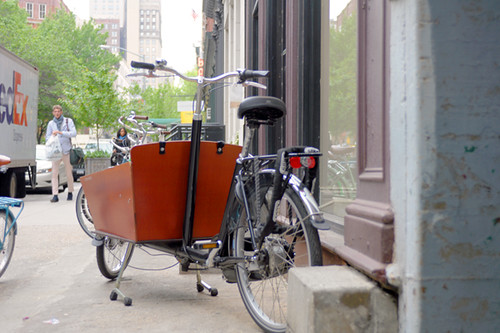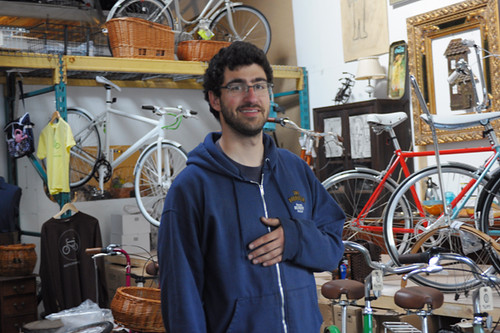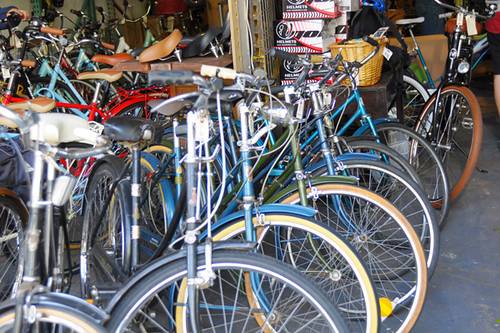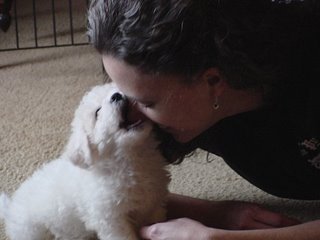
I get a lot of email here from climbers just beginning to get out and get serious about their owntechnical climbing. Over the last week I had a conversation with my climbing partner about the "bigger picture" and our own personal climbingobjectives.
Neither of us likes crag climbing in particular. Truth is, likemost of us we'd rather be in the mountains. The flip side to that is it takes a LOT more effort to get out in the mountains and get somethings done. As in something actually climbed. By this time of year, every year I have usually had a full belly offrustration with the bad weather and the dangerous avalanche conditions.
We came up with a less than 50% percentage of successful trips compared to what we have actually attempted in the mountains. Alpinists are a hardcore and stubborn tribe! Attributes I can admire even if I don't always possess them. By this time of year I can moreeasily turn to rock climbing and riding my road bike. I hatebeating my head against the climbs I still want to get done before the temps soar and the snow and ice disappearsfor another year. My lack of motivation can be telling this time of year. But it is also the time of year I most want to get my alpine projects done.
One of the many discussions we had this last week was the difference between crag climbing and actualalpinism. From that discussion and the local conditions we were experiencing the conversationsplitinto several topics. One of the most interesting topics to me was how I end up labeling"little picture" and "big picture" climbs.
Hopefully what Irelate from those conversations my help others sort out their own projects.
"Little picture" climbs in the context of Cold Thistle and Alpinismare generally crag climbs. Climbs that are close to the road, little objective danger and generally (but not always) at the upper limit of one's technical skill level. Little picture because you really don't have to concentrate on much past how hard the climbing is, what gear will I need and how will I get back down.
Small picture climbs generally allow you to make huge errors in judgment and the gear selection with little consequence for the mistake. It is a great place to learn from mistakes.
The ice climbing in Ouray and Codywill generally fall into this category. As will most of the top roping and smaller cragging areas around the country. But there are "big picture" dangers anywhere it snows. Ice always falls down when it gets warm or cold enough. Bozeman at any given time gets snow and wind as can Cody. There is no easy label when it comes to ice climbing.
Hafner and Johnson Canyon are other "little picture" climbing areas. The places you might head whenthe overall conditions are dismal in the Canadian Rockies.
Alpine objectives in the Canadian Rockies are not "little picture". When it snows, the wind blows, or there is a radical temp change there, the actual technical difficulties will mean almost zip. What really matters in Canada and the Alpsis what might drop on your head at any given time, It might well be rock, ice, lightening,rain or snow! The climbing might well be "easy" by comparison.
If you spend enough time out you get to know what the real timepicture is for your own objectives. Small picture or Large picture? Some climbing areas might be little picture in summer (few issues that need to be on your mindbut the actual climbing) and big picture (a laundry list of objective dangers) in winter. The "picture" and what is required of you mentally canchange by season or be the same year around.
It is easy to come from a strong technical back ground and jump into "small picture" objectives safely.
"Big picture" objectives on the other hand might well have little patience for strong technical climbers without the ability to process all the issues alpinism will eventually require.
The climbs that I generally see turn onto epics are where the climber's technical abilities get over whelmed by the bigger picture of the climb's objectives dangers. That in turnforces the climber into a mental and physical state oftunnel vision. Call it "sketched out". But things go bad quickly when it happens. Once you are forced to deal with the world via tunnel vision it is very easy to over look the environmental details that defineyour safety and well beingon a big climb.
I think it is better to first label and then study your climbs. Note the avi terrainon the approach and decent. What are the snow conditions you want as compared to what you have. What is the hour you want to be up and off the climb? Will conditions allow you of attain your goals? What is your plan if you can't maintain your time schedule?
There is a reason we look for "perfect conditions". Perfect conditionsmake ourclimbs easier on the approach, decent and the actual climb. Perfect conditions make the picture smaller.
What I learned, again, from the conversation is notto let anyone or any one climb over whelm your ability to appreciate the "picture" fully. If something "feels" wrong, it generally is. Don't let your inability to articulate what is wrong stop you from making good decisions. The mountains have been there a long time. They aren't going any where.
Postscript:
I suspect it has something to do with the conditions in Canada last week but it is worth checking out Will's recent comments as well. Same idea,different voice.
http://willgadd.com/?p=668

 Despite Horsey’s pointed jab at government priorities and politics, Congressman Norm Dicks came to the rescue by reallocating
Despite Horsey’s pointed jab at government priorities and politics, Congressman Norm Dicks came to the rescue by reallocating 


 Road re-construction continued at a feverish pace as preparations commenced for the park to “re-open.” During that time, the Mount Rainier community mourned the loss of former
Road re-construction continued at a feverish pace as preparations commenced for the park to “re-open.” During that time, the Mount Rainier community mourned the loss of former  And with great fanfare, the primary road into the park re-opened on May 5th. More interesting for you upper mountain lovers, ski sicko Sky Sjue and partner Christophe Martine made what is probably the
And with great fanfare, the primary road into the park re-opened on May 5th. More interesting for you upper mountain lovers, ski sicko Sky Sjue and partner Christophe Martine made what is probably the  Speaking of fame, U.S. Senator Maria Cantwell visited Camp Muir and chatted up some of the climbing rangers. Imagine a sitting U.S. Senator getting the inside scoop on the park from a group of mountain climbers (I’m glad she didn’t call 911 for such questions!). Anyway, this wasn’t the last of Senator Cantwell, as she reappears in August for a summit climb.
Speaking of fame, U.S. Senator Maria Cantwell visited Camp Muir and chatted up some of the climbing rangers. Imagine a sitting U.S. Senator getting the inside scoop on the park from a group of mountain climbers (I’m glad she didn’t call 911 for such questions!). Anyway, this wasn’t the last of Senator Cantwell, as she reappears in August for a summit climb. There was a flurry of helicopter activity around the upper mountain during a mock-rescue operation in late August.
There was a flurry of helicopter activity around the upper mountain during a mock-rescue operation in late August.  As a video-game devotee, I was thrilled to discover Mount Rainier featured in the new X-Box 360 version of Halo 3. And then there were those two lost hikers on the Muir Snowfield, whose butts were saved by a Canadian climbing guide Phil Michael. Go Canada! Not so lucky was Pickles, the famed fox of Mount Rainier. Poor Pickles had to be euthanized after being hit by a car.
As a video-game devotee, I was thrilled to discover Mount Rainier featured in the new X-Box 360 version of Halo 3. And then there were those two lost hikers on the Muir Snowfield, whose butts were saved by a Canadian climbing guide Phil Michael. Go Canada! Not so lucky was Pickles, the famed fox of Mount Rainier. Poor Pickles had to be euthanized after being hit by a car. 






















 Adam starting the first pitch
Adam starting the first pitch Adam coming up the second pitch
Adam coming up the second pitch Adam at the base of Lawn Darts
Adam at the base of Lawn Darts Rapping in the rain
Rapping in the rain